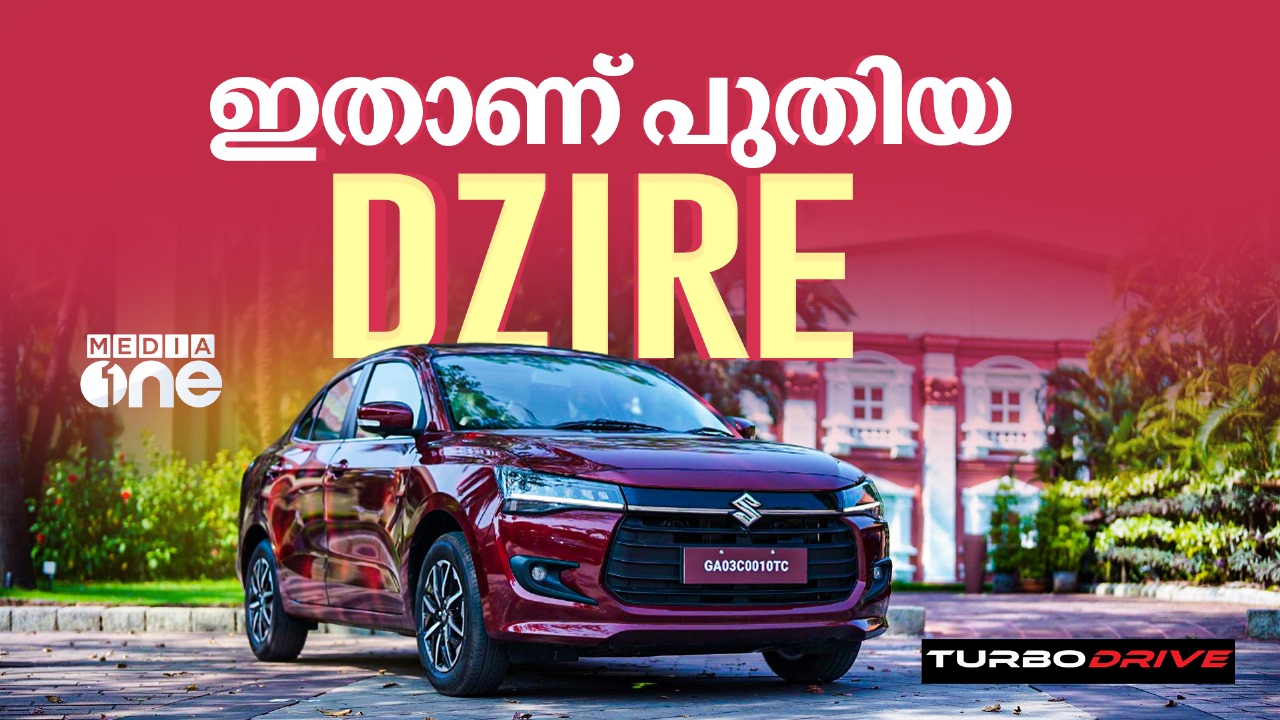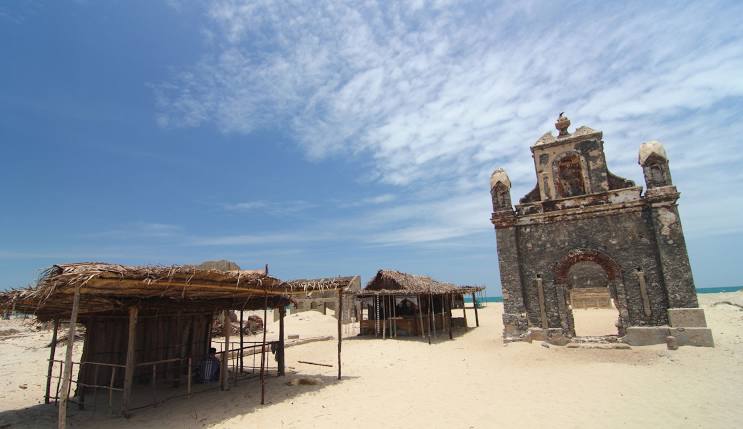
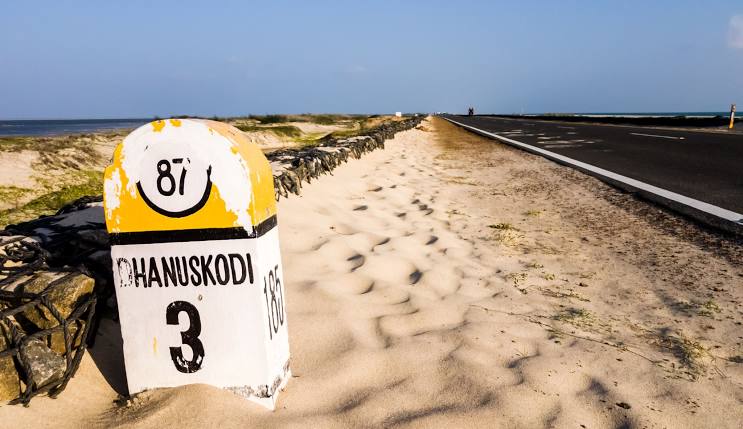
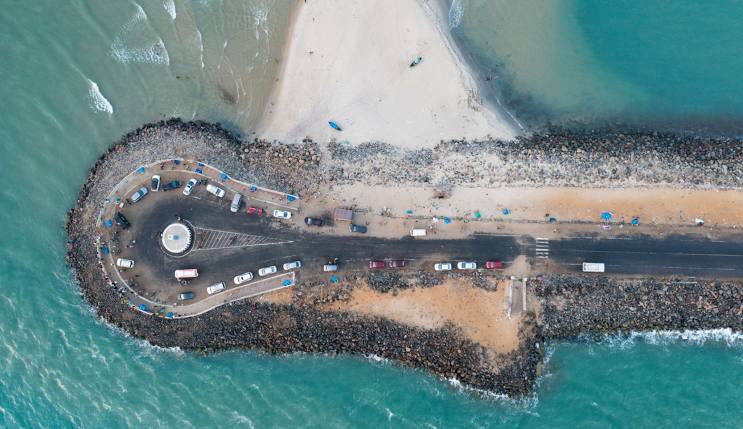
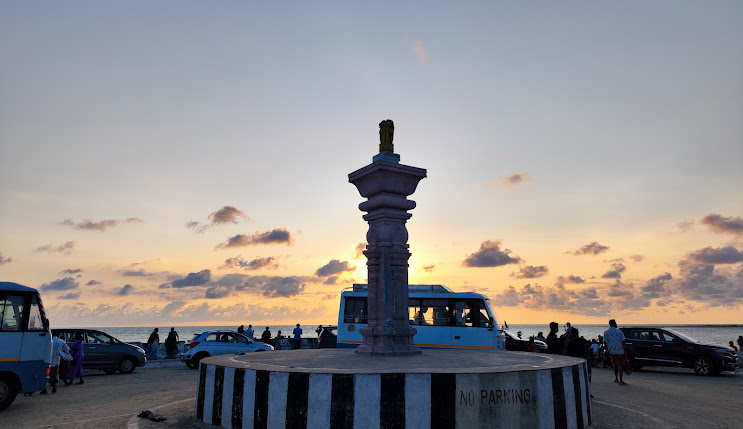
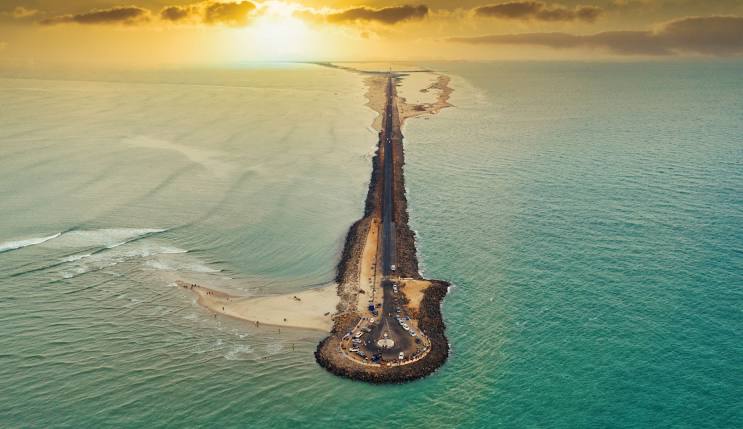
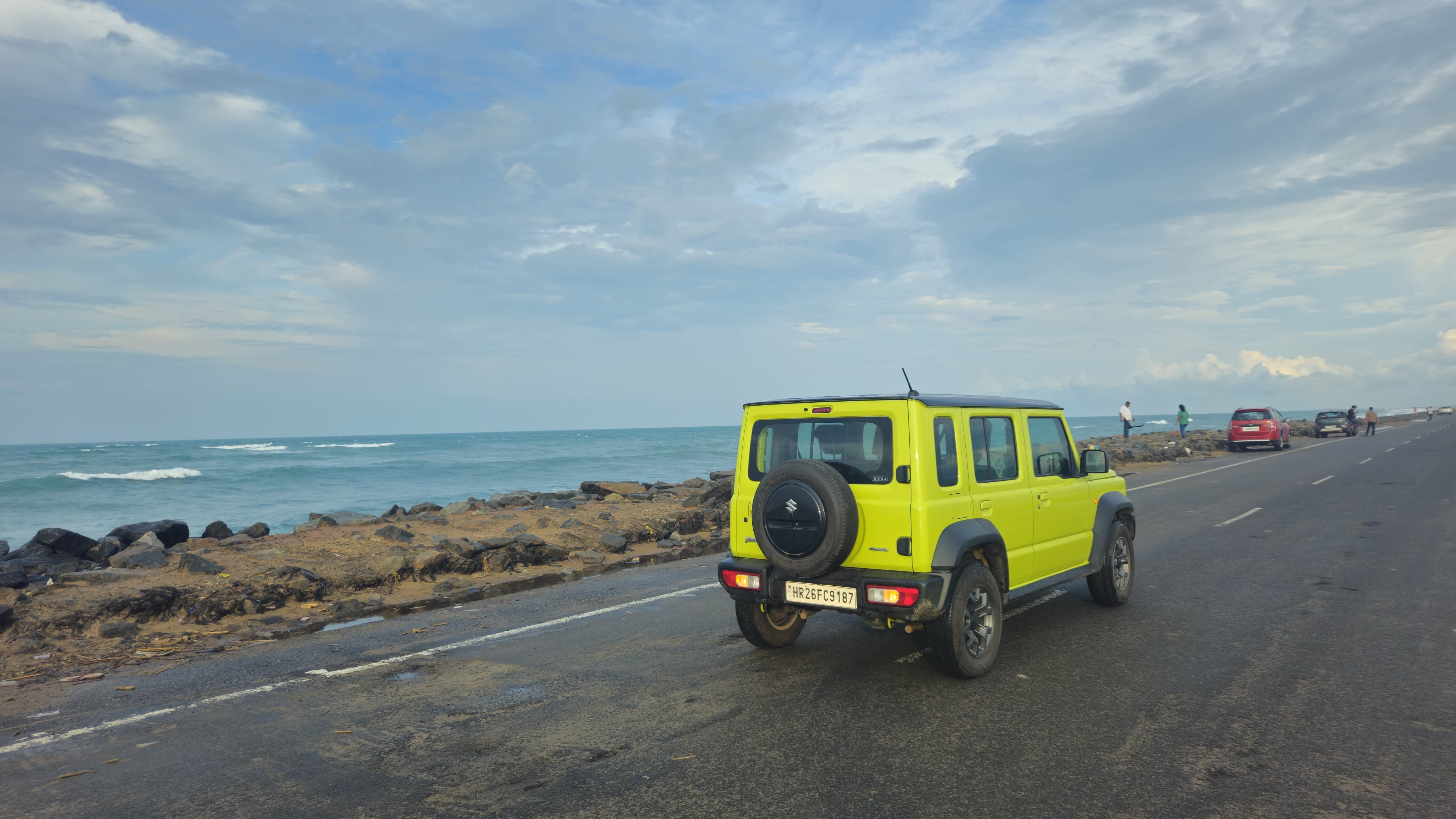
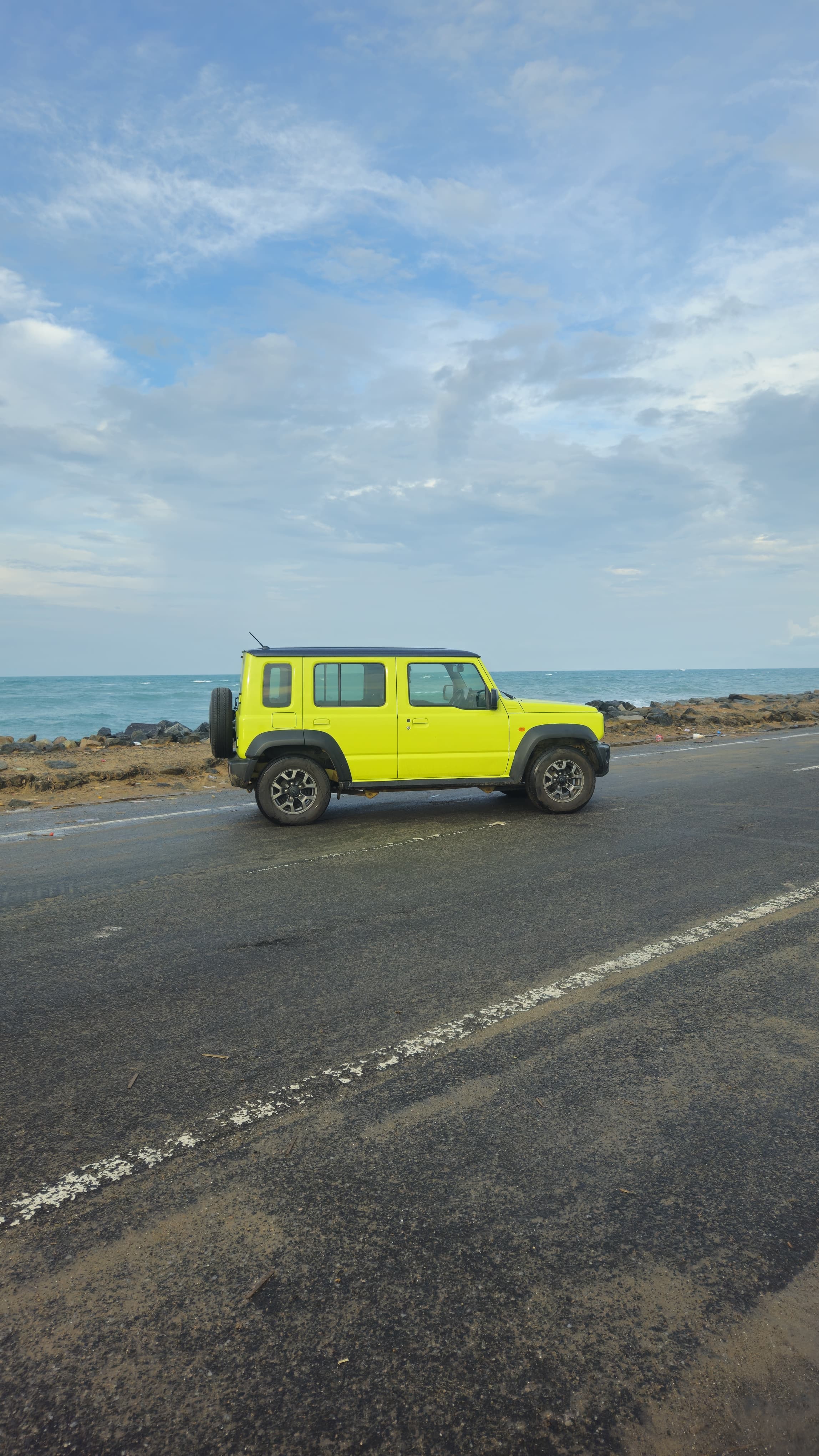
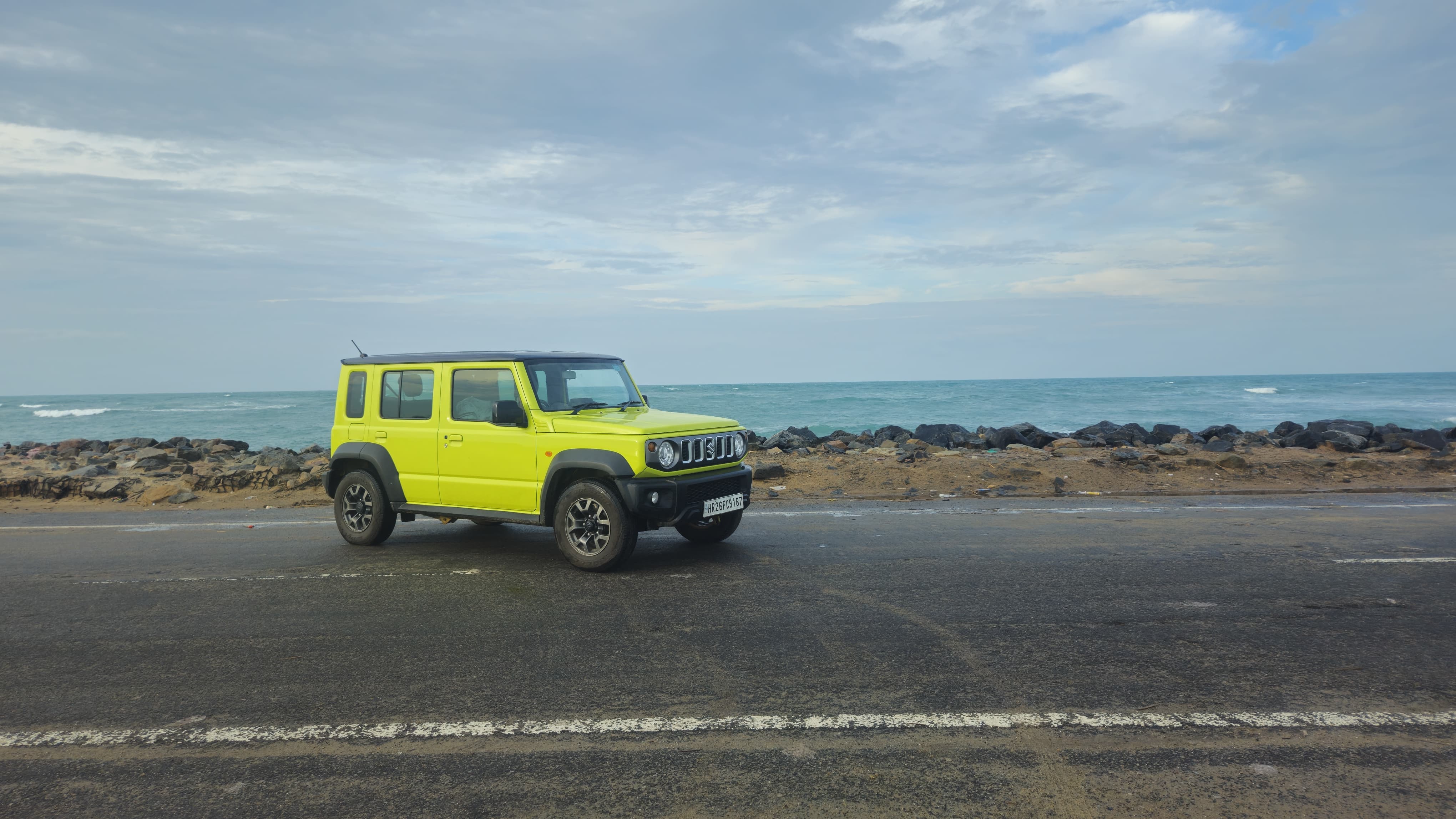
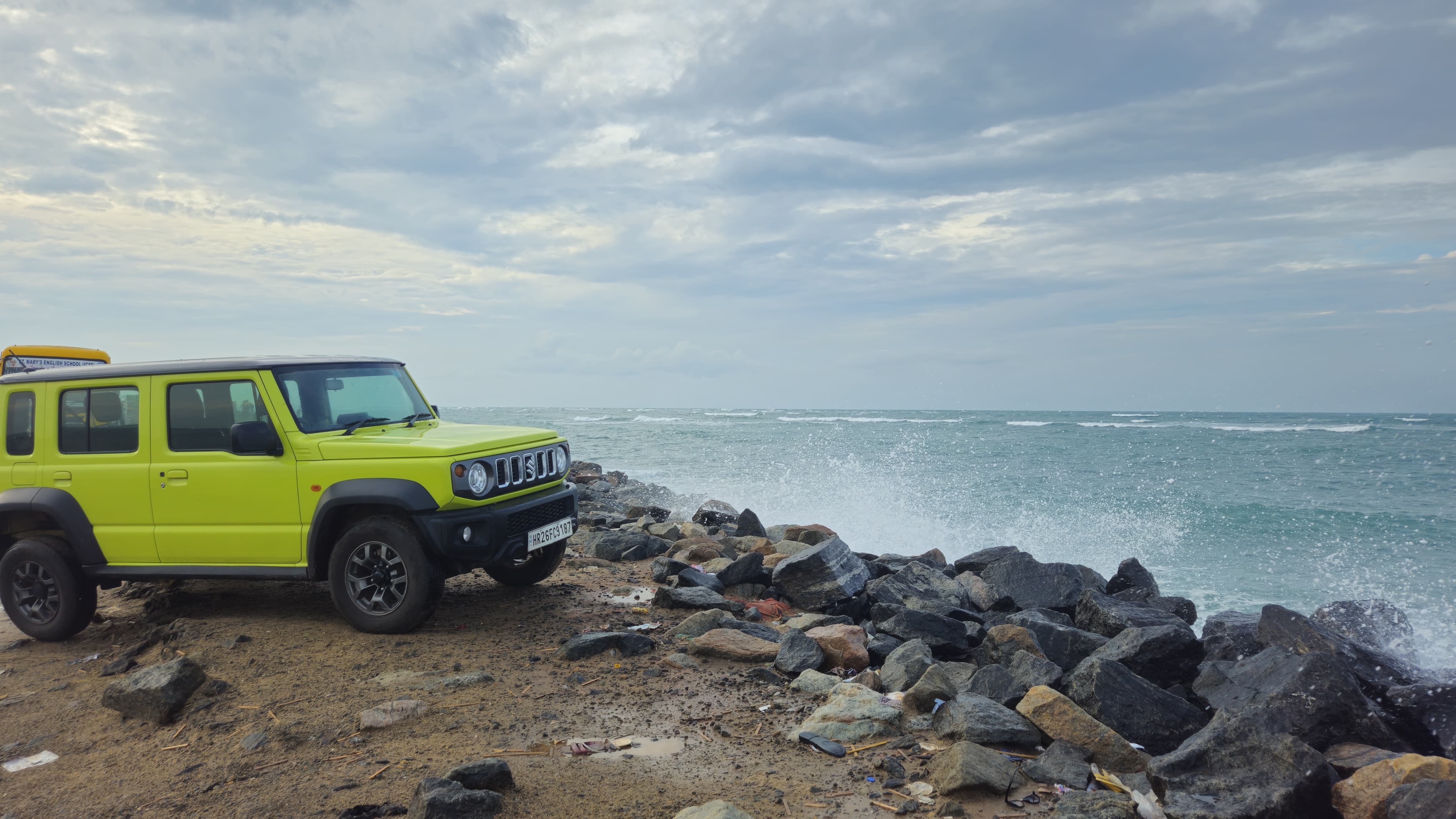
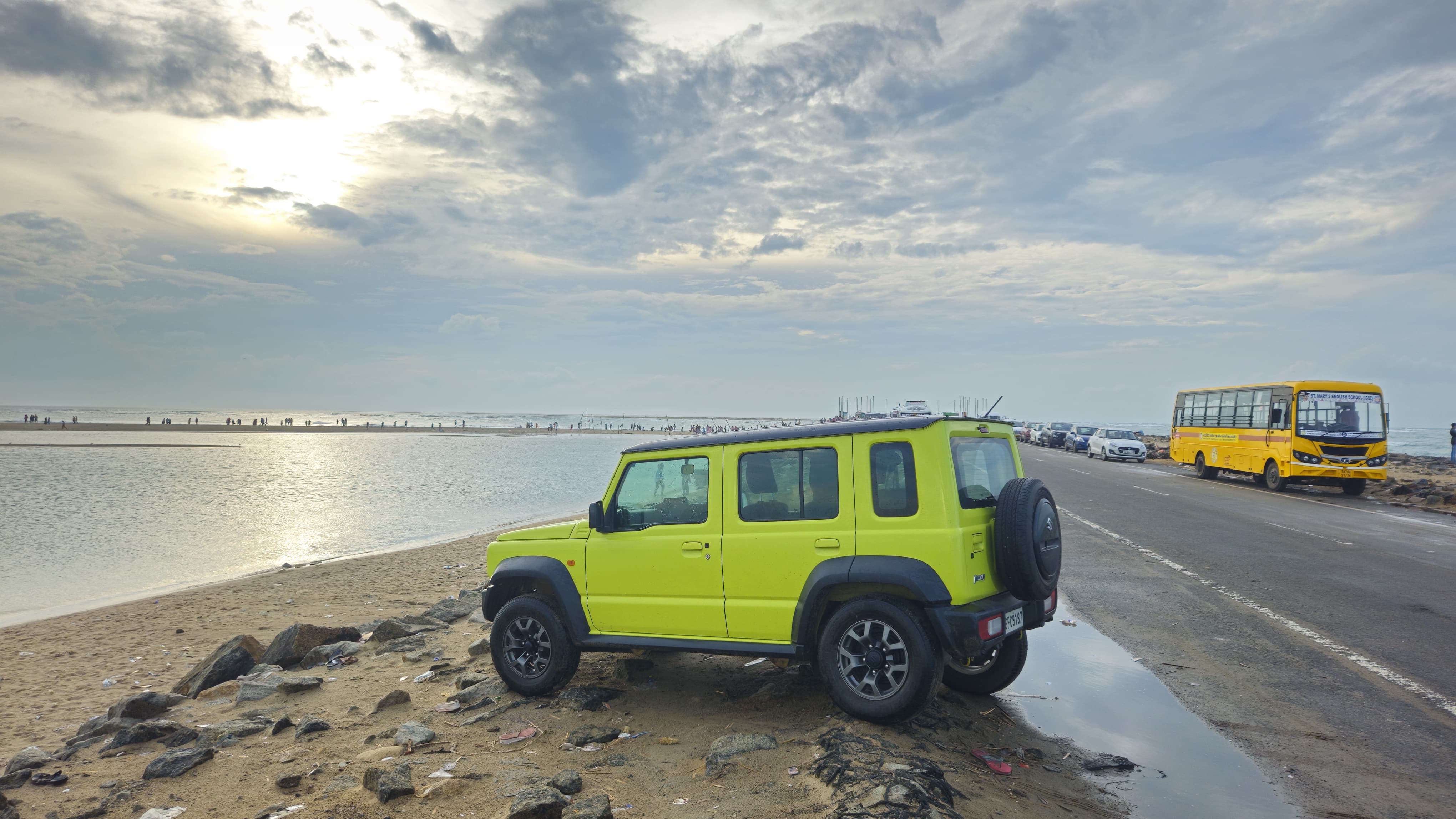
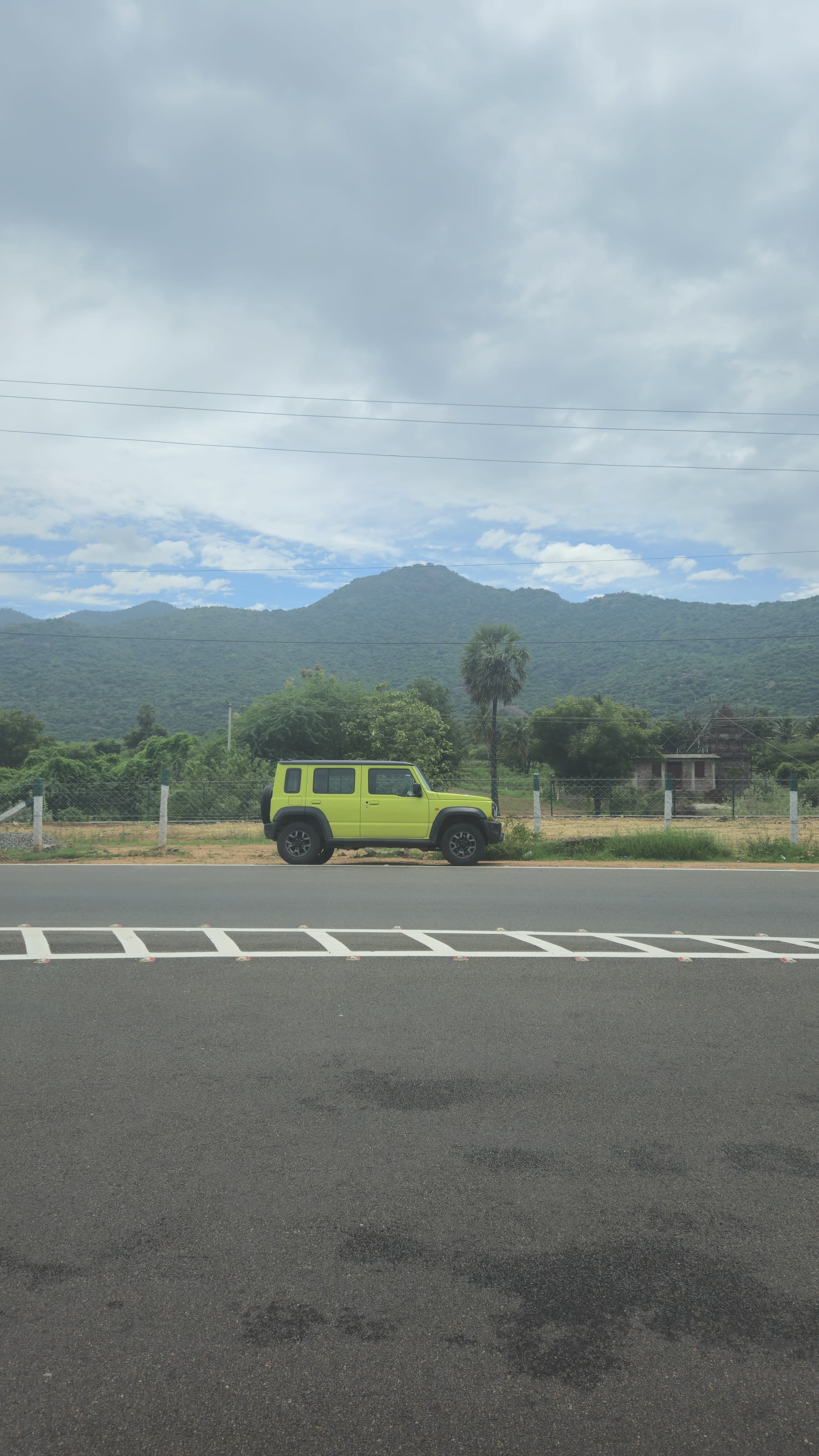
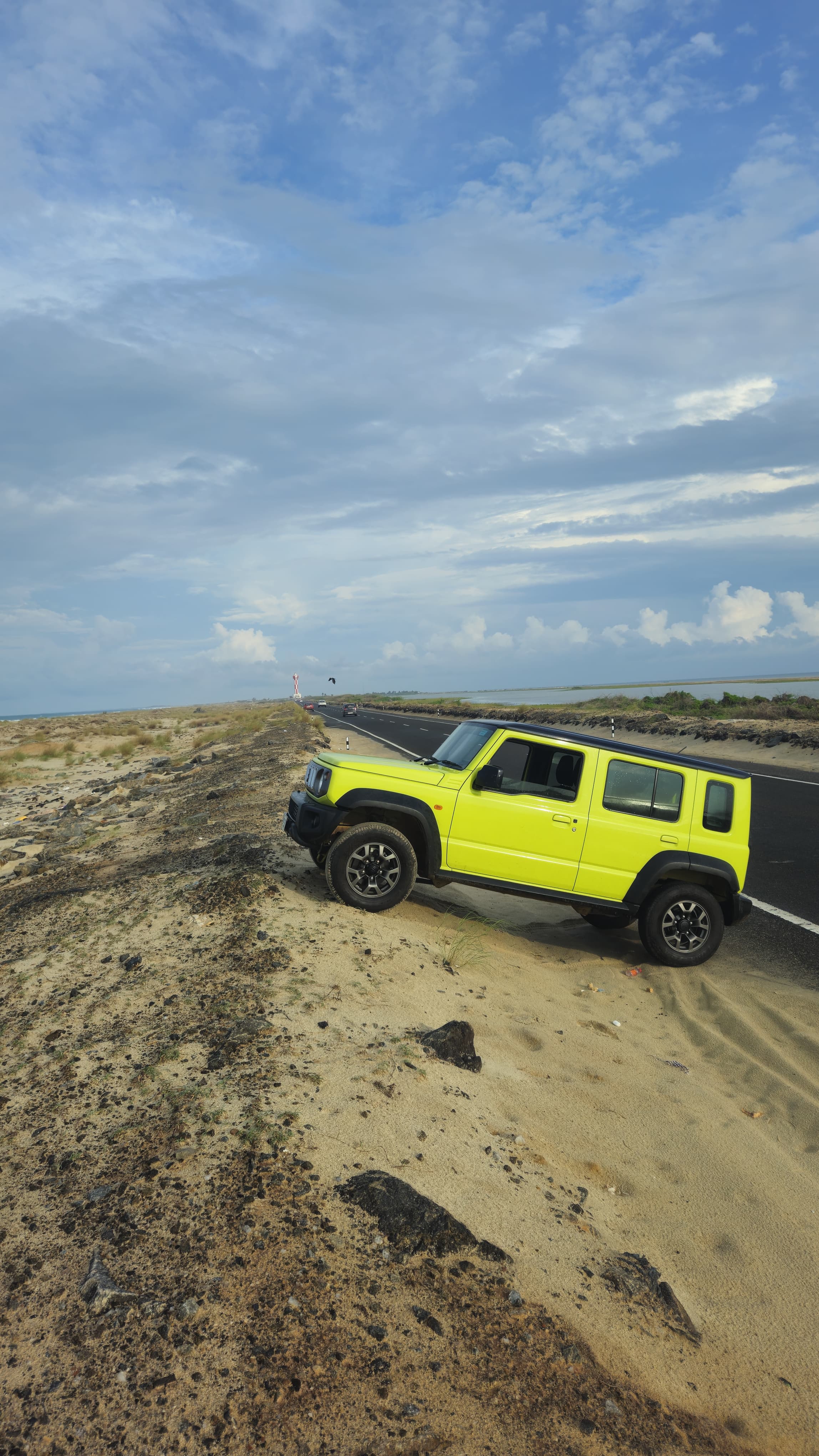
Dhanushkodi is an abandoned town at the south-eastern tip of Pamban Island of the state of Tamil Nadu in India. It is south-east of Pamban and is about 24 kilometres (15 mi) west of Talaimannar in Sri Lanka. The town was destroyed during the 1964 Rameswaram cyclone and remains uninhabited in the aftermath. Although devoid of inhabitants, Dhanushkodi remains a tourist attraction due to its historical and mythological relevance.
The National Highway completed the 9.5-km-long road – 5 km from Mukuntharayar Chathiram to Dhanushkodi and 4.5 km from Dhanushkodi to Arichamunai.Until 2016, Dhanushkodi was reachable either on foot along the seashore or in jeeps. In 2016, a road was completed from the village of Mukundarayar Chathiram.
A metre gauge railway line connected Mandapam on mainland India to Dhanushkodi. Boat mail express ran from Chennai Egmore to Dhanushkodi till 1964 when the metre-gauge branch line from Pamban to Dhanushkodi was destroyed during the 1964 Dhanushkodi cyclone.In 2003, Southern Railway sent a project report to Ministry of Railways for re-laying a 16 kilometres (9.9 mi) railway line to Dhanushkodi from Rameswaram. The planning commission looked into the possibility of a new railway line between Dhanushkodi and Rameswaram in 2010.
The area around Rameswaram is prone to high-intensity geomorphic activity. A scientific study conducted by the Geological Survey of India indicated that the southern part of Dhanushkodi facing the Gulf of Mannar sank by almost 5 metres (16 ft) in 1948 and 1949, due to vertical tectonic movement of land parallel to the coastline. As a result of this, a patch of land of about 0.5 kilometres (0.31 mi) in width, stretching 7 kilometres (4.3 mi) from north to south, was submerged under the sea.
On 17 December 1964, a tropical depression formed at 5°N 93°E in the South Andaman Sea. On 19 December, it intensified into a cyclonic storm. After 21 December 1964, it moved westwards, almost in a straight line, at the rate of 400 to 550 kilometres (250 to 340 mi) per day. On 22 December, it crossed Vavuniya in Sri Lanka and made landfall at Dhanushkodi on the night of 22–23 December 1964. Estimated wind velocity was 280 kilometres per hour (170 mph) and tidal waves were 7 metres (23 ft) high.
An estimated 1,800 people died in the cyclonic storm on 22 December including 115 passengers on board the Pamban-Dhanushkodi passenger train.[14][15][16] The entire town was marooned and the Government of Madras declared Dhanushkodi as a ghost town, unfit for living.[17]
In December 2004, around the 40th anniversary of the deadly cyclone, the sea around Dhanushkodi receded about 500 metres (1,600 ft) from the coastline, briefly exposing the submerged part of the town before massive tsunami waves struck the coast.
The 1964 Rameswaram cyclone
The 1964 Rameswaram cyclone (also known as the Dhanushkodi cyclone) was regarded as one of the most powerful storms to ever strike India on record.[1] The system was first identified as an area of low pressure over the Andaman Sea on December 15. Following interaction with a tropical wave, it began to develop and became a depression by December 18. Increasingly rapid intensification ensued over the following days with the cyclone attaining hurricane-force winds around 5°N the next day. Early on December 23, the storm struck Ceylon near Trincomalee with winds estimated at 240 km/h (150 mph), ranking it as a modern-day super cyclonic storm. Weakening somewhat, the storm soon struck Tamil Nadu. Rapid weakening followed once the cyclone was onshore and it degenerated
How its to drive:
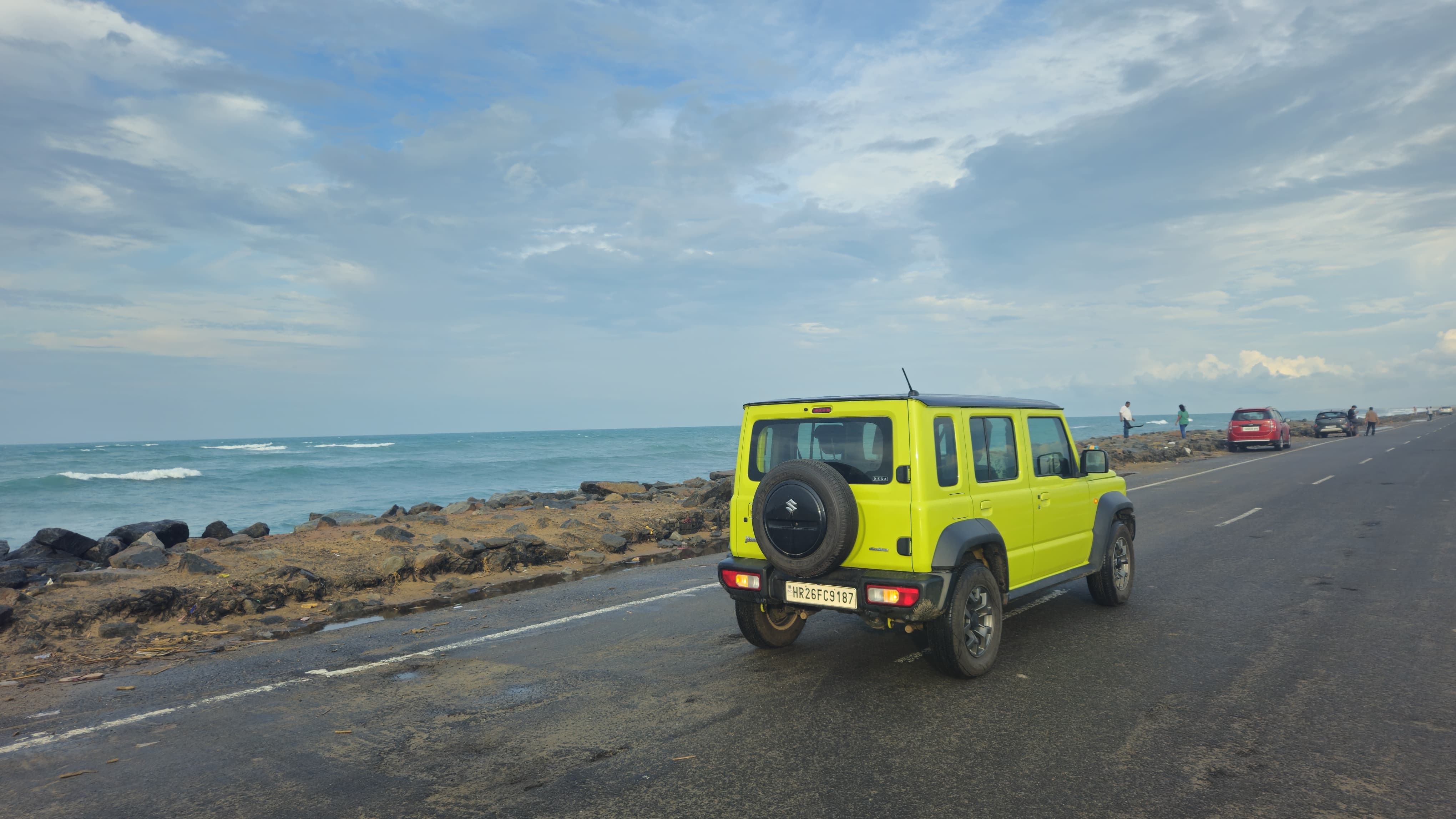
It’s a small compact 1462 cc Petrol engine generates a power of 103bhp@6000rpm and a torque of 134.2Nm@4000rpm adds a fair amount of cruising on long trips. But not a powerful engine on overtakes it takes a lot more time to cross 100kmph because its not made for fast drives. Also we hit the top speed 120kmph on the express way to Dhanushkodi and we forgot how much it took to cross it. Actually this engine tuned more for off roads than Highways and its good enough engine on long drives but need more time to cover the distances, in fact you need to plan a little bit, sometimes this car cannot meet your target distance.
Drive & Comfort
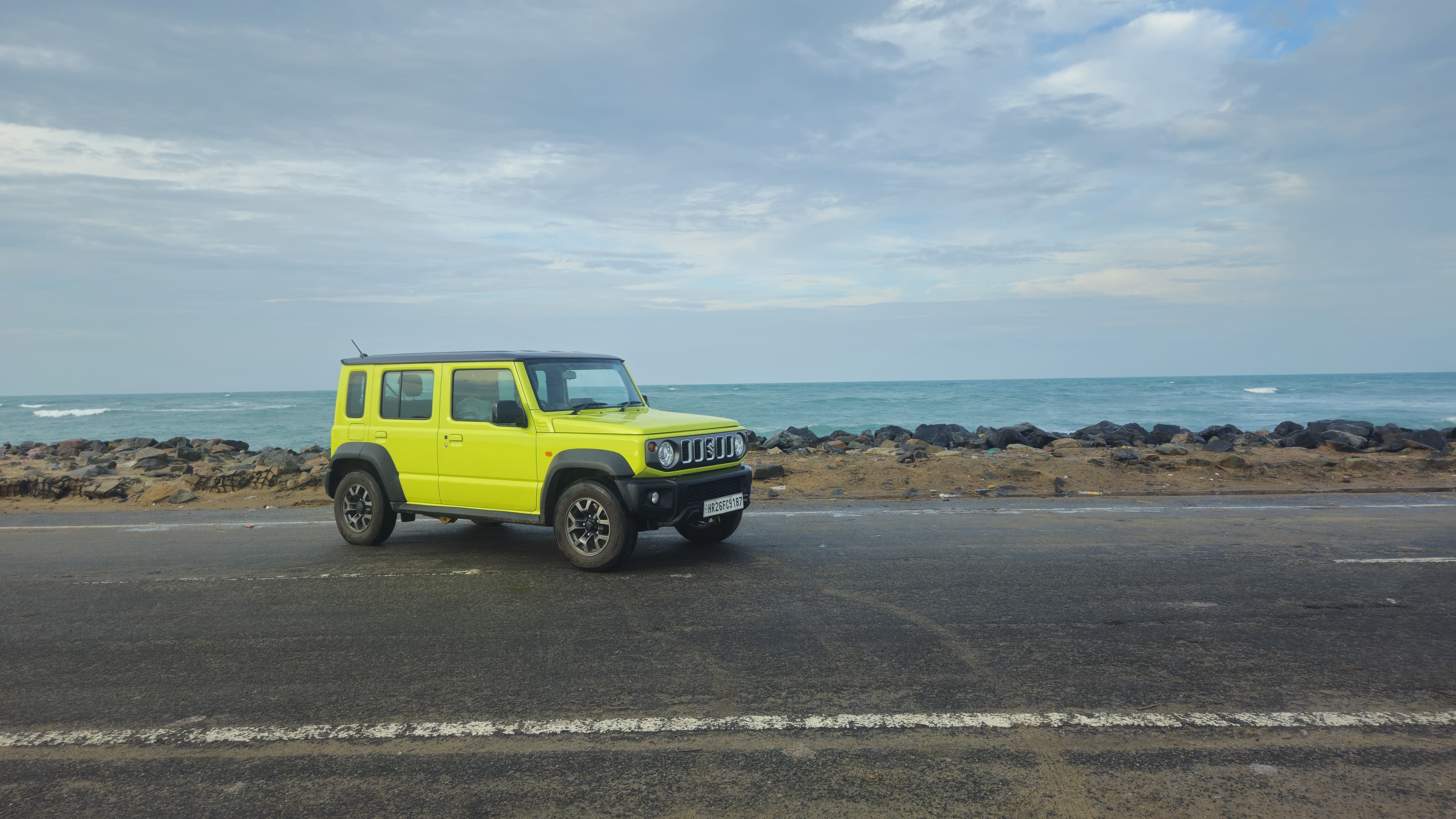
It’s a little tiny car, you cannot pack 4 fully grown adults with their luggage’s, its more recommendable for 2 or 3 peoples for long drives more than 3 days. Even though the ride is fairly comfortable thanks to the Automatic transmission, its very easy on long highways still it offers only 4 speed Automatic Transmission. 5 or 6 speed AT will be more comfortable on long drives.
Tech and Connectivity
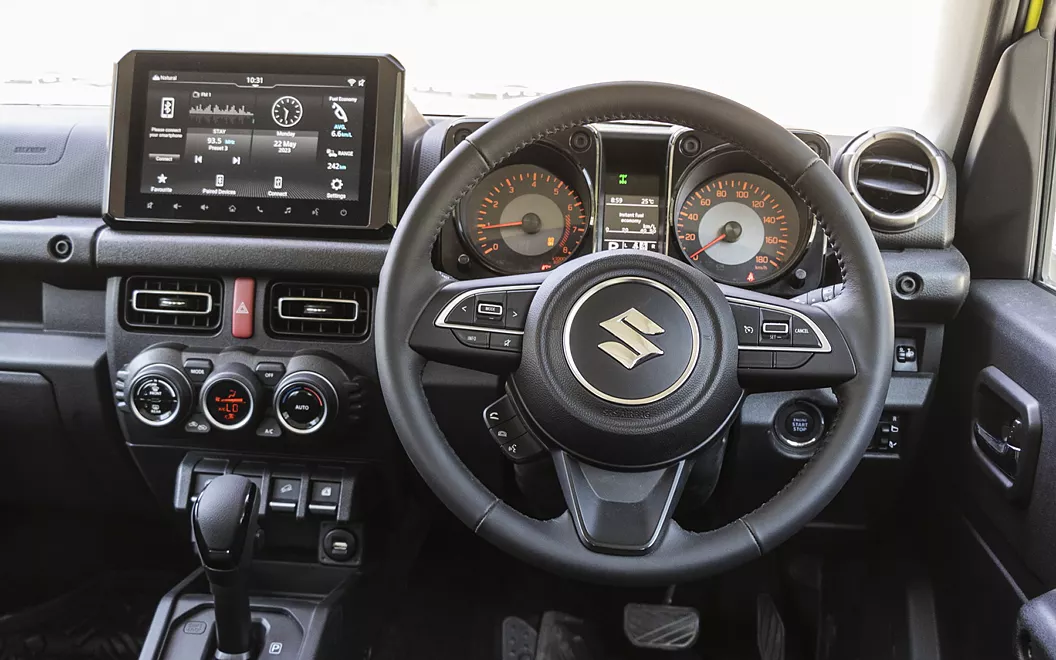
The Maruti Suzuki Jimny offers a nice responsive touch screen which offers the connectivity of Wireless Android Auto and Apple Car Play. Which is really helpful in long drives like this. You can control the Music, Calls with the help of steering mounted controls. Also, it offers a Reverse Parking Camera which is very useful in daylight and not recommendable during night drives.
Advantage of the Compact Size
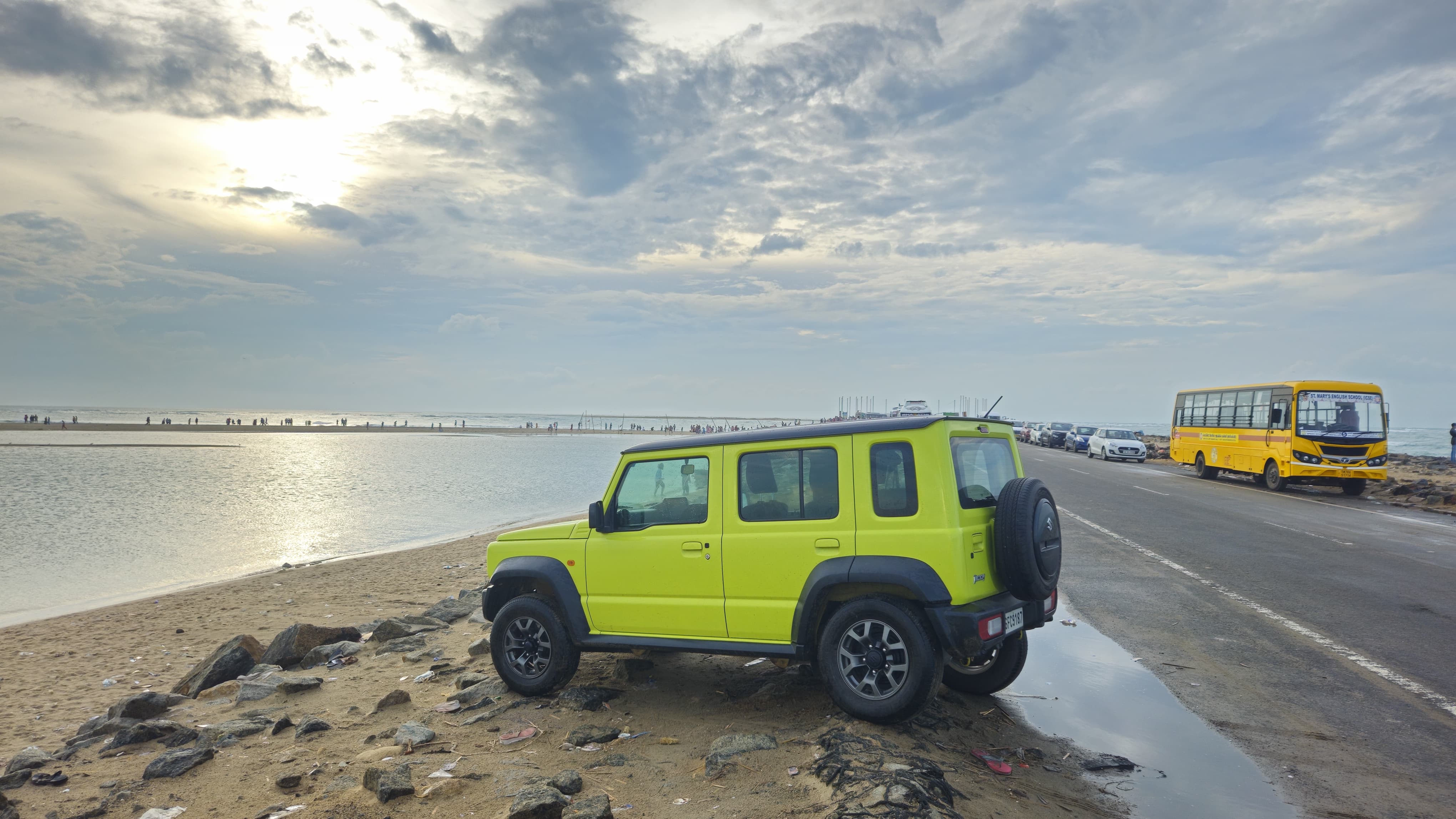
Rameshwaram is a small and tiny town especially the places temple premises, while visiting those areas the size of the Jimny really helped us to manage, Only Jimny can easily manage that kind of tricky atmosphere. Thanks for the compact and cute little charming design.
Verdict

It was very a engaging drive to Dhanushkodi and this SUV can do all the things including offroad, Highway touring, city drives the practicality is really a boon to the owners while tilting in tight city traffic and taking small country roads. YES, You can blindly trust on this machine because this is a complete package for all your needs and wants

